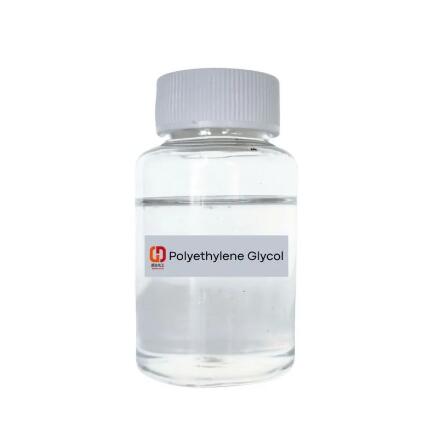The Role of Polyethylene Glycol in Modern Medicine
2024-09-06
In the realm of pharmaceuticals and healthcare, Polyethylene Glycol (PEG) has gained prominence due to its wide range of applications, particularly in drug formulations and therapeutic treatments. With its flexible molecular structure and biocompatibility, PEG has become a key component in advancing medical technologies and improving patient care.
What is Polyethylene Glycol?
Polyethylene Glycol (PEG) is a hydrophilic (water-attracting) polymer composed of repeating units of ethylene oxide. PEG can have different molecular weights, affecting its physical state—ranging from a viscous liquid to a solid waxy substance. The various molecular weights of PEG are denoted with numbers like PEG-3350 or PEG-8000, where the number signifies the polymer’s average molecular weight.
How Does PEG Work in Medicine?
PEG’s versatility and safety profile have made it a crucial ingredient in pharmaceuticals and medical treatments. Its main attributes—water solubility, biocompatibility, and low toxicity—enable its use in a variety of medicinal products, including drug delivery systems, laxatives, and biologics.
Key Medical Applications of PEG
1. PEG in Drug Delivery
One of the most innovative uses of PEG is in drug delivery systems. PEGylation, the process of attaching PEG molecules to therapeutic drugs or proteins, has revolutionized how certain drugs are delivered in the body. By PEGylating a drug, its solubility and stability can be significantly improved, extending its circulation time in the bloodstream and reducing its degradation by the immune system.
PEGylated drugs are less likely to be broken down prematurely, allowing for more precise and controlled delivery of the active compound. This enhances the drug’s effectiveness and minimizes side effects. Many biologic drugs, including cancer treatments and hormone therapies, utilize PEGylation to improve their efficacy and patient tolerance.
2. PEG as a Laxative
Perhaps one of the most well-known medical uses of PEG is as a laxative. PEG 3350 is the active ingredient in many over-the-counter laxatives and is used to treat constipation. It works by retaining water in the colon, softening the stool and promoting bowel movements. PEG-based laxatives are generally well-tolerated and safe for long-term use, making them a preferred choice for individuals dealing with chronic constipation or those needing bowel preparation before medical procedures such as colonoscopies.
3. PEG in Vaccines
In recent years, PEG has gained attention for its role in the development of vaccines, particularly mRNA vaccines for viruses like COVID-19. PEG is used in lipid nanoparticles, which encase and protect the fragile mRNA molecules, ensuring they reach their target cells effectively. This use of PEG has opened doors to more advanced vaccine technologies that can be tailored to target various diseases more efficiently.
4. Wound Healing and Tissue Engineering
PEG hydrogels are gaining traction in the fields of wound healing and tissue engineering. These hydrogels can be designed to mimic the body’s natural extracellular matrix, providing a scaffold that supports cell growth and tissue regeneration. PEG-based hydrogels are used in wound dressings, where they help maintain a moist environment conducive to healing, and in tissue engineering, where they serve as scaffolds for growing new tissues.
5. Medical Devices and Biocompatibility
PEG’s biocompatibility makes it an ideal coating material for medical devices, implants, and surfaces that come into contact with bodily fluids. By coating devices like catheters or prosthetics with PEG, manufacturers can reduce the risk of rejection and biofilm formation. PEG coatings prevent the attachment of proteins and cells to the surface, thereby reducing immune responses and enhancing the device’s integration with the body.
Benefits of PEG in Medicine
1. Enhanced Drug Efficacy
The use of PEG in drug delivery enhances the bioavailability and stability of medications, allowing for more controlled and effective treatments. This leads to better patient outcomes, especially in the treatment of chronic conditions like cancer and autoimmune diseases.
2. Reduced Side Effects
By improving the targeting and release of drugs, PEGylation helps minimize the risk of side effects. Patients benefit from fewer adverse reactions and more consistent therapeutic results, particularly when using PEG-based biologics.
3. Improved Patient Compliance
PEG-based laxatives are gentler on the digestive system compared to harsher alternatives, making them easier for patients to tolerate. This improves adherence to treatment regimens, particularly for those dealing with chronic constipation.
4. Biocompatibility and Safety
PEG is recognized as safe for internal use by regulatory authorities, including the FDA. Its non-toxic, non-irritating nature makes it suitable for a wide range of medical applications, from drugs to medical devices.
Challenges and Considerations
While PEG is largely considered safe, it is not without its limitations. In rare cases, patients may develop allergic reactions to PEG, particularly in the case of PEGylated drugs or vaccines. As PEG continues to be used in more medical products, ongoing research is necessary to monitor its long-term effects and improve its compatibility with different patient populations.
Conclusion
Polyethylene Glycol (PEG) is a vital component in modern medicine, offering enhanced drug delivery options, safe laxatives, and innovative solutions in tissue engineering and wound healing. Its versatility, biocompatibility, and role in advancing pharmaceuticals ensure that PEG will continue to be a significant player in healthcare. With the ongoing research and development in PEG applications, we can expect even more groundbreaking uses for this remarkable compound in the future.



